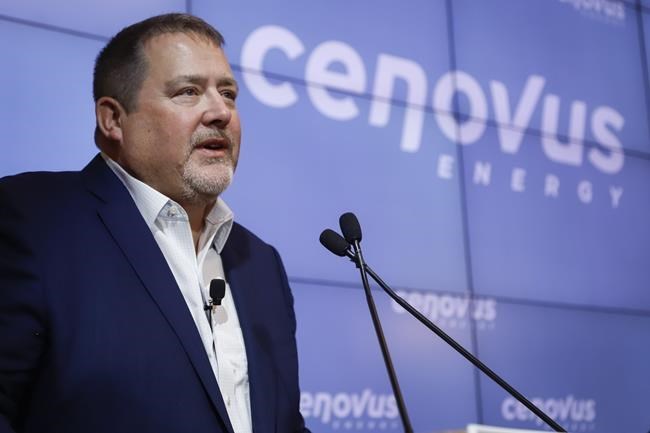ST. JOHN'S, N.L. — Cenovus Energy will restart work on the West White Rose offshore oil project in Newfoundland, ending nearly two years of uncertainty in the local energy sector, the company announced Tuesday.
Work to complete the project will resume in 2023, it said in a news release.
“The joint venture owners have worked together to significantly de-risk this project over the past 16 months," Cenovus president and chief executive officer Alex Pourbaix said. "As a result, we’re confident restarting West White Rose provides superior value for our shareholders compared with the option of abandonment and decommissioning."
West White Rose was among several oil projects put on hold in Newfoundland after global oil prices collapsed in early 2020. Majority owner Husky Energy, which has since been bought by Cenovus, said in September 2020 it was reviewing all its operations in the province, prompting fears it would abandon the White Rose oilfield altogether.
White Rose sits about 350 kilometres east of St. John's, and it's one of four oil projects paying royalties to the province for operating in its offshore area. West White Rose will be a satellite extension of White Rose and will extend the life of the field by about 14 years, Cenovus said.
Construction on the extension project is about 65 per cent complete, and the first oil from the new platform is expected in 2026, the company said. Peak production is expected to reach about 80,000 barrels a day by the end of 2029.
Cenovus said its decision to restart was influenced by an "amended" royalty structure that will protect the project's finances "in periods of low commodity prices."
The company's announcement came as the province's oil and gas industry association was set to begin its annual conference in St. John's. In a news release issued before he spoke to the conference, Premier Andrew Furey said he supported Cenovus's decision.
Furey told reporters Tuesday the new royalty structure will permit Newfoundland and Labrador to benefit when oil prices are high. "We all get angry and frustrated when oil companies make more when you see the high prices at the gas pumps," he said.
The premier, however, did not provide details about the payment structure regarding when oil prices are low.
The new agreement with Cenovus also provides $100 million to the provincial government to establish a "green transition fund," as well as a $200-million "royalty abandonment credit" toward decommissioning costs, the government's news release said.
Though the costs of decommissioning oil installations in the province's offshore are generally not disclosed, the province can wind up having to pay back royalties to cover them. Last June, as Suncor was debating pulling the plug on its Terra Nova offshore oil project, the government said decommissioning the field could end up costing taxpayers up to $350 million.
Suncor announced later that month it would keep the Terra Nova field pumping.
The government gave Husky Energy $41.5 million in December 2020 to maintain about 300 jobs connected to West White Rose, as the company debated the project's future. The money came from a pot of $320 million provided by the federal government that year to help the province's oil sector cope with pandemic-driven price crashes.
Tuesday's government release said West White Rose will create more than 250 permanent jobs on the oil platform itself and create or maintain up to 1,500 other jobs, either directly related to the project or indirectly through other businesses catering to it.
This report by The Canadian Press was first published May 31, 2022.
Sarah Smellie, The Canadian Press
Note to readers: This is a corrected story. A previous version misstated the relationship between Husky and Cenovus.


